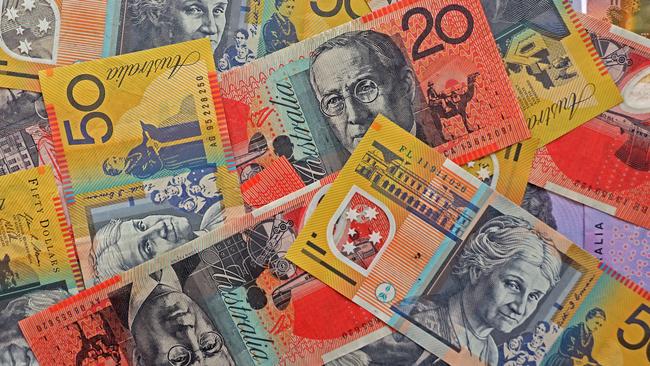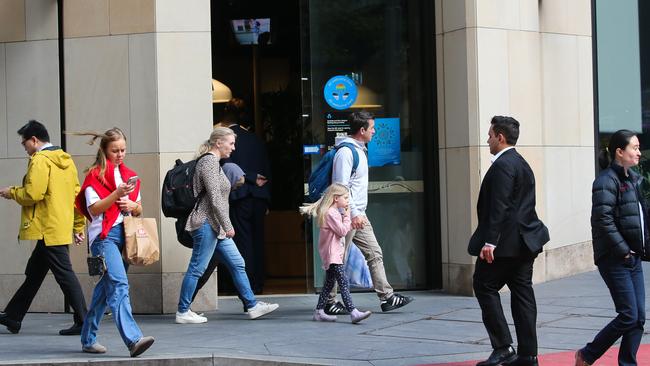Inflation drops to 3.5 per cent for the month of July, ABS
Economists have dampened hopes that new inflation figures could lead to a sooner-than-expected rate cut, unless “something out of left field” happens.
Inflation has eased to 3.5 per cent, raising the hopes of homeowners a cash rate cut could be in the cards sooner rather than later, although economists say the Reserve Bank is unlikely to be moved.
Wednesday’s monthly July Consumer Price Index (CPI) revealed a drop from the 3.8 per cent recorded in June, and will be the only inflation update before the Reserve Bank’s next cash rate meeting on September 24.
Monthly August inflation figures will be released the day after on September 25, while the more meaningful September quarterly numbers won’t be released until October 30.
However, the all important annual trimmed mean, or underlying inflation which removes large pricing movements, also eased by 0.3 per cent to 3.8 per cent.
The Australian Bureau of Statistics (ABS) said July’s CPI fall reflected the federal government’s $300 energy bill relief fund rebate, which has reduced the cost of electricity for households at the cost of up to $75 per quarter.
The rebate rollouts have begun in Western Australia and Queensland, with households in other states yet to have the relief appear on their statements.
Warren Hogan, chief economist with Judo Bank, said the rebate had helped reduce inflation for now, but warned it was not a long-term solution.
“The subsidies aren’t real. They’re a government intervention,” Mr Hogan told Sky News.
“It’s good for cost of living and it’s real in people’s pockets.”
But he said if the rebate was removed from the calculation of the CPI, inflation was not going down, “it’s going sideways”.
“I think the only way they’re going to get a rate cut in this year is if something completely out of left field happens.”
Betashares’ chief economist David Bassanese said the subsidies likely lowered inflation by about 0.2 per cent, however would also result in a rebound in electricity prices and a lift in

CPI to about 0.35 per cent once they ended.
Although he welcomed easing underlying inflation, Mr Bassanese doubted it would pressure the RBA to lower rates.
“The distortions caused by the extension of the electricity subsidies is also fooling no-one, least of all the RBA,” he said.
“All up, the RBA is likely firmly on hold until it gets further conviction of falling underlying inflation from the more detailed and reliable quarterly CPI report, and it will likely require at least two encouraging quarterly CPI results before it could act.”
He said he did not expect the first rate cuts to happen until February next year at the earliest.
Treasurer Jim Chalmers disagreed with commentators, saying “there’s nothing artificial about helping people with their electricity bills”.
He said July’s monthly CPI figures reflected “welcome and encouraging progress in the fight against inflation”.
“We’d like inflation to fall further and faster, and we expect it to,” he said.
“What we’ve seen in this data today is really quite welcoming because it shows that monthly inflation, (and) headline underlying ... has all gone down in July, and that’s a good thing but we know that people are still doing it tough.”

Shadow treasurer Angus Taylor said Australia’s homegrown inflation still remained “too high and sticky,” and said Australia was lagging behind other economies.
“Under Labor, gas is up 33 per cent, electricity is up 14 per cent (even after taxpayer funded rebates) and rents are up 16 per cent,” he said.
“These figures confirm that Labor is still failing to address the source of the inflation challenge. Labor’s attempts to manipulate the headline inflation rate are only temporary masks for the real issue.”
The ABS said the most significant contributors to the annual rise were housing (+4.0 per cent), food and non-alcoholic beverages (+3.8 per cent), alcohol and tobacco (+7.2 per cent), and transport (+3.4 per cent).
“CPI inflation is often impacted by items with volatile price changes like in automotive fuel, fruit and vegetables, and holiday travel,” Leigh Merrington, ABS acting head of prices statistics, said on Wednesday.
“It can be helpful to exclude these items from the headline CPI to see underlying inflation, which was 3.7 per cent in July, down from 4.0 per cent in June.”
While both inflation measures remain above the RBA’s target range of 2 to 3 per cent, interest rate markets are tipping a pre-Christmas cash rate cut of up to 30 basis points by the end of the year.

However, RBA governor Michele Bullock has dashed hopes of near-term relief, stating inflation remains stickier than what the central bank would like.
The bank forecasts trimmed mean inflation to dip below target in December 2025, before tracking towards the midpoint in 2026.
Speaking after the board kept rates steady at a 4.35 per cent at its August meeting, Ms Bullock said the bank was still pursuing a “narrow path” to reduce inflation, without choking the economy into a recession and pushing up unemployment.
“Many people are doing it tough and we’re very conscious of that,” she said.
“But really the best thing we can do is to bring inflation back down to target, because we can’t let inflation get away. It hurts everyone.”






To join the conversation, please log in. Don't have an account? Register
Join the conversation, you are commenting as Logout